
Lund University is a public research university in Sweden and one of Northern Europe's oldest universities. The university is located in the city of Lund in the Swedish province of Scania. It traces its roots back to 1425, when a Franciscan studium generale was founded in Lund. After Sweden won Scania from Denmark in the 1658 Treaty of Roskilde, the university was officially founded in 1666 on the location of the old studium generale next to Lund Cathedral.

Halland is one of the traditional provinces of Sweden (landskap), on the western coast of Götaland, southern Sweden. It borders Västergötland, Småland, Scania and the sea of Kattegat. Until 1645 and the Second Treaty of Brömsebro, it was part of the Kingdom of Denmark. Its name means Land of Rocky Slabs referring to the coastal cliffs of especially the northern part of the region.

Hallands Nyheter is a Swedish newspaper, founded by Artur Lagerihn in 1905. The newspaper is published in Falkenberg. It has a daily circulation of 31,600 and is owned by Stampen AB. The editorial page supports Centerpartiet. It is printed six days a week, daily except Sunday.

Halmstad is a port, university, industrial and recreational city at the mouth of the Nissan river, in the province of Halland on the Swedish west coast. Halmstad is the seat of Halmstad Municipality and the capital of Halland County. The city had a population of 71,422 in 2020, out of a municipal total of over 100,000. Halmstad is Sweden's 19th-largest city by population and located about midway between Gothenburg and Malmö.

Idrottsföreningen Kamraterna Norrköping, more commonly known as IFK Norrköping or simply Norrköping, is a Swedish professional football club based in Norrköping. The club is affiliated to Östergötlands Fotbollförbund and play their home games at Östgötaporten. The club colours, reflected in their crest and kit, are white and blue. Formed on 29 May 1897, the club have won thirteen national championship titles and six national cup titles.

Halmstads Bollklubb, also known simply as Halmstad or HBK or Bollklubben, is a Swedish professional football club located in Halmstad in the county of Halland. The club, formed 7 February 1914 and approved membership in the Swedish Sports Confederation on 6 March the same year. The club competes in the highest tier of Swedish football, Allsvenskan, and has won four national championship titles and one national cup title. HBK is a member-controlled club.
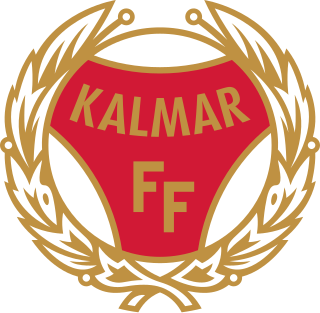
Kalmar Fotbollförening, more commonly known as Kalmar FF, is a Swedish professional football club based in Kalmar. The club is affiliated to Smålands Fotbollförbund and play their home games at Guldfågeln Arena. Formed on 15 June 1910, the club have won one national championship title (2008) and three national cup titles.

The Liberal Youth of Sweden is the youth wing of the Swedish Liberals. The Liberal Youth of Sweden has a long tradition of international cooperation and is a full member of the International Federation of Liberal Youth (IFLRY) and the European Liberal Youth (LYMEC). They have published the magazine Liebling - Liberal Youth since 1961.
Kalmar Nation is one of thirteen student nations of Lund University in Sweden. It has 1,935 members and is thus the sixth-largest student nation in Lund - ranking behind Västgöta but ahead of Östgöta Nation.

The Västgöta Nation, colloquially known as VG's, is one of thirteen student nations at Lund University in Sweden. With its 2,832 members, it is the fifth-largest nation in Lund - ranking behind Malmö but ahead of Kalmar Nation.
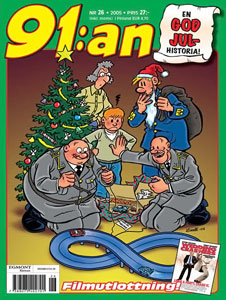
91:an is a popular Swedish comic strip, created in 1932 with the title En beväringsmans upplevelser och äventyr. This name soon changed to 91:an Karlsson, by Rudolf Petersson. It is now published in its own bi-weekly comic book, 91:an, and also as a single strip in the popular weekly women's magazine Året Runt.

The Halland Regiment, designations I 16 and I 16/Fo 31, was a Swedish Army infantry regiment that traced its origins back to the 16th century. The regiment's soldiers were originally recruited from the provinces of Västergötland and Dalsland, but it was later garrisoned in Halland. The unit was disbanded as a result of the disarmament policies set forward in the Defence Act of 2000.
There are several derbies in the Allsvenskan and in the lower divisions of the Swedish football pyramid.
Sten-Eggert Vergenhanns Nauclér was a Swedish Army officer who served in various conflict areas, in Swedish service, Ethiopian service and as a volunteer. After a few years in the Swedish Army, Nauclér volunteered for service in the Winter War and later in the Continuation War in Finland. He returned to Sweden where he was promoted to captain in 1948 before travelling to Ethiopia to train officers for Emperor Haile Selassie's Imperial Guards. Nauclér was deployed in Korea with the Kagnew Battalion during the Korean War in 1951 and also served as head of the Ethiopian Liaison Section in Tokyo. In 1956 he was deployed in Egypt with the Swedish UN Battalion during the Suez Crisis and later in the Congo where he was commander of the Swedish UN Battalion during the Congo Crisis. Nauclér retired from the military in 1963 and then worked for a mining corporation in Liberia. During the Biafran War he led a Red Cross team with relief efforts.
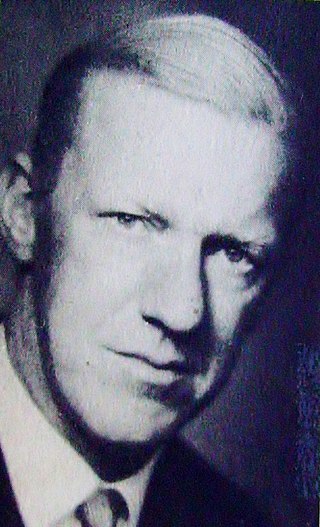
Torsten Waldemar Gårdlund was a Swedish economist, economic historian, essayist and biographical writer. In economic history, he published several significant monographs, but also several works on individual Swedish industries. He was also active as a developing country advisor and wrote three books on development issues. Gårdlund was a professor at the Stockholm School of Economics from 1947 to 1963, and professor of international economics at Lund University from 1965 to 1976.
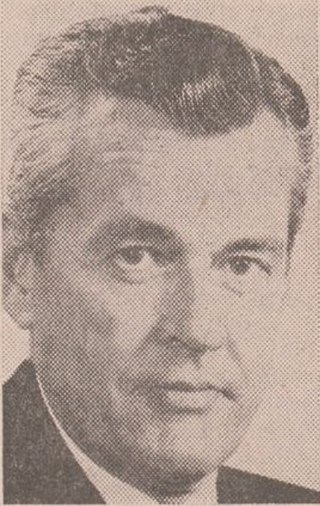
Friherre Major General Nils-Fredrik Palmstierna was a Swedish Air Force officer. His senior commands include the post of Vice Chief of the Defence Staff, Chief of Staff of the Eastern Military District and head of the Swedish Armed Forces Staff College.
Västra Götaland Defence District was a Swedish defence district which operated in from 1939 to 2000. Its staff was located in Gothenburg Garrison in Gothenburg, Sweden.

Lunds nation is one of thirteen student nations of Lund University, Sweden. With its 3,448 members, Lunds is the third-largest nation in Lund.
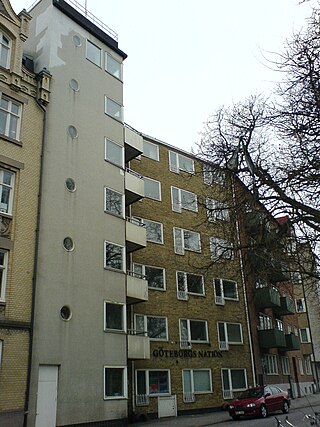
Göteborgs Nation is one of thirteen student nations of Lund University, Sweden. With its 4,113 students, Göteborgs is the second-largest nation in Lund, ranking behind Helsingkrona and ahead of Lunds.














